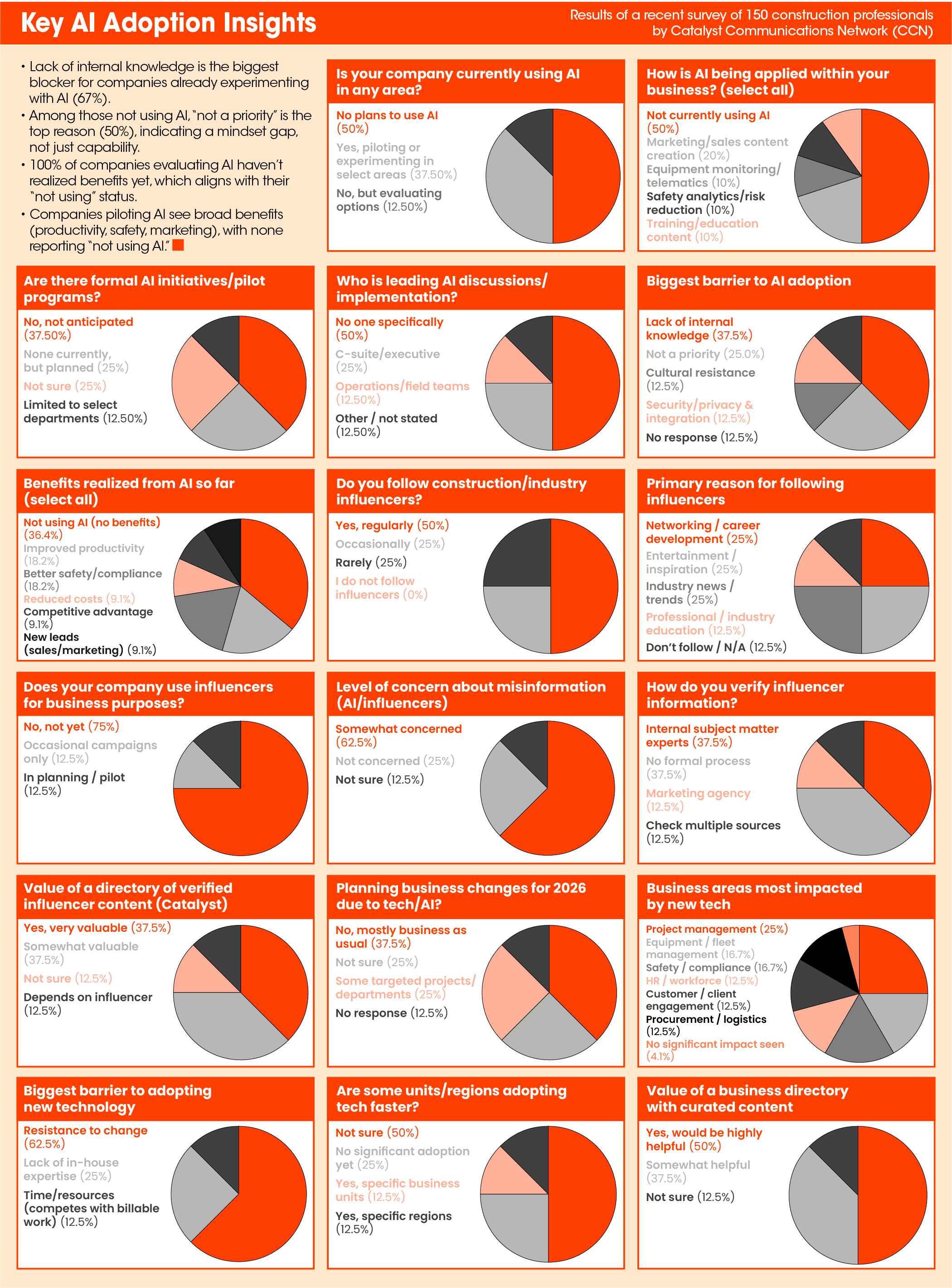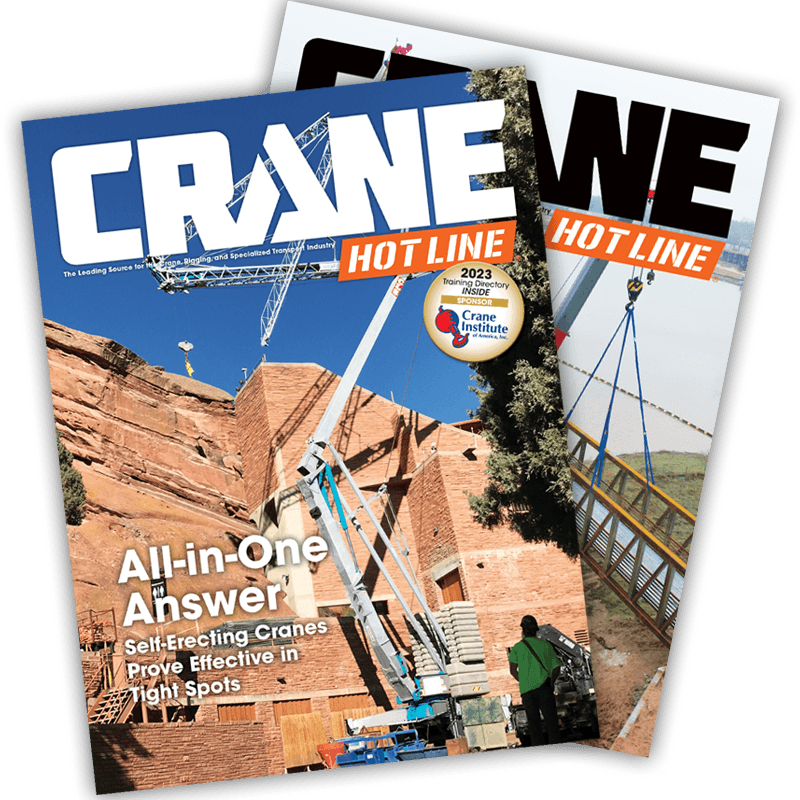Essential Strategies
Early adoption of Artificial Intelligence tools shows promise amid limited implementation
The crane and construction industries stand on the cusp of a technological revolution, with Artificial Intelligence (AI) promising to transform everything from project planning to on-site safety.
However, a recent survey by Catalyst Communications Network (CCN) reveals that while awareness is high, actual adoption remains in its early stages. Surveying 150 construction professionals across North America — primarily in heavy equipment, lifting and contracting sectors — the results highlight a cautious approach to AI integration.
Key findings include:
- Limited Implementation: Only 18% of respondents reported active use of AI tools in their daily operations. This limited uptake echoes broader industry trends, as companies grapple with implementation challenges even as AI’s potential becomes increasingly clear.
- Awareness is Growing: 72% of respondents believe AI could significantly improve efficiency in areas such as scheduling and risk management.
- Barriers to Adoption: Cost (cited by 45%), lack of training (32%) and integration concerns with existing workflows (25%) were cited as the top hurdles.
- Early Wins: Among adopters, 65% reported benefits in predictive analytics for equipment maintenance and site safety, aligning with emerging tools highlighted in recent industry reports.
These results come at a time when AI is making headlines for its role in addressing longstanding crane operation and construction challenges. A July 2025 survey by Slate Technologies reinforces CCN’s findings, showing that while 74% of construction leaders see value in AI, only 13% plan to adopt it soon. This “belief-action gap” suggests the industry is still in the exploratory phase, with many firms testing AI on a small scale before full commitment.

Setting the Stage
Experts emphasize that early adoption, though limited, is laying the groundwork for broader transformation. “If 2024 was the year that AI in construction started to walk, then 2025 will be the year it starts to run,” said an Autodesk executive in their May 2025 State of Design & Make Report, updated with 2025 insights. They predict AI will “significantly impact the construction industry by enhancing productivity and addressing labor shortages,” particularly through tools that simplify workflows and reduce manual tasks.
Michael Morris, writing for EC&M in July 2025, highlights a similar sentiment: “Construction leaders back AI but adoption remains limited,” noting that while 65% of leaders haven’t adopted AI, those who have are seeing up to 30% reductions in project delays through predictive analytics. This aligns with CCN’s survey, where early adopters praised AI for flagging hazards in real-time, a critical need in crane and lifting operations.
In a FactorLab study from summer 2025, a crane contractor’s safety director shared a practical example: “The objective was to move attention away from backend, retrospective metrics to what was actively taking place in the field.” By using AI to analyze pre-job safety conversations, the firm achieved a 20% reduction in incidents in the first year and 50% in the second, demonstrating a tangible return on investment despite broader industry hesitation.
Recent developments also underscore slow but steady progress. OpenAsset’s July 31, 2025, report on top AI innovators lists 50 companies transforming construction with tools focusing on estimating, scheduling and safety — growing the market by 24.6% annually from $4.86 billion in 2025 to a projected $22.68 billion by 2032.
Oracle’s February 2025 update points out AI’s potential for “predictive insights to help improve design, build and maintenance,” potentially saving millions through schedule optimizations. Yet, as Roland Berger’s June 2025 insights reveal, adoption often hinges on intuitive tools such as 3D model-based systems, which can save teams 40% in time and keep 70% of projects on schedule.
Looking Ahead
CCN’s survey paints a picture of an industry in transition — excited about AI’s possibilities but proceeding with caution. As one respondent noted, “We’re dipping our toes in with basic predictive tools for equipment downtime, but full integration feels like a big leap.” This sentiment is echoed industry-wide, with experts like those at Slate.ai warning that firms delaying adoption risk falling behind.
In today’s fast-evolving business landscape, agentic AI — autonomous systems that act independently to handle complex tasks — is reshaping operations in crane and construction industries. These sectors, often bogged down by operational demands such as equipment management and supply chain disruptions, face unique challenges in adopting AI.
The message is clear: Act now by starting small, focusing on high-impact areas such as safety and scheduling and leveraging resources from trusted networks to harness AI’s potential without overwhelming your teams. As AI evolves, early movers will gain a competitive edge, turning limited adoption into an industry standard.



